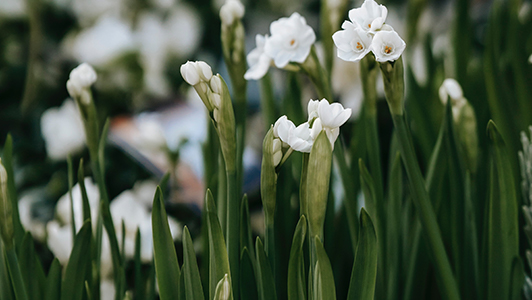
Leaf spot may kill leaves and reduce plant vigor in iris plants, said K-State horticulture expert Ward Upham.
Home Gardening: Now is the time to control iris leaf spot
K-State horticulture expert says plant fungus favors wet periods during spring
March 2, 2023
By Maddy Rohr, K-State Research and Extension news service
MANHATTAN, Kan. — Spring has begun to emerge from winter, and along with it has come the iris leaf spot fungus. Kansas State University horticulture expert Ward Upham said now is the time to begin control measures by removing old, dead leaves from iris plants.
“Iris leaf spot is a fungus disease that attacks the leaves and occasionally the flower stalks and buds of iris,” Upham said. “Infection is favored by wet periods during the spring, and emerging leaves eventually show small spots.”
Iris leaf spots have red borders, and the surrounding plant tissue appears water soaked, Upham said. Spots will become larger after flowering.
“The disease tends to be worse in wet weather and may kill individual leaves. Though the disease will not kill the plant directly, repeated attacks can reduce plant vigor so that the iris may die from other stresses,” Upham said.
Spores are passed between plants by wind or splashing water.
“Removing and destroying dead leaves will help with control. For plants that had little infection the previous year, this may be all that is needed,” Upham said.
Plants with heavy infection should be sprayed with chlorothalonil or myclobutanil in the spring.
“Repeat sprays every 7-10 days for 4-6 sprays. Iris leaves are waxy, so be sure to include a spreader-sticker in your spray to ensure good coverage,” Upham said.
Upham and his colleagues in K-State's Department of Horticulture and Natural Resources produce a weekly Horticulture Newsletter with tips for maintaining home landscapes and gardens. The newsletter is available to view online or can be delivered by email each week.
Interested persons can also send their garden and yard-related questions to Upham at wupham@ksu.edu, or contact your local K-State Research and Extension office.

